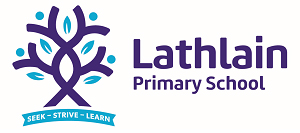Composite Classes
What is a composite year level class?
A composite class contains students from more than one year level. For example, the class can be made up of students from Year Two and Year Three. Composite classes have been shown to provide benefits to both the older and younger students in the class, including through mentoring roles and enhanced learning opportunities. Research demonstrates that there are many benefits to students being in a composite class; and through teamwork and positive communication we can support all our children to successfully transition to their new class and school.
Why do we create composite classes?
As our enrolments fluctuate up or down there will be a need to run composite classrooms at our school to meet industrial requirements. This is because funding in public schools is allocated on a per student basis, with our overall budget being assigned according to the total number of students enrolled on the census date, in early Term 1 each year.
How does the school decide the classes each year?
The administration and the staff work together to form classes that consider overall student numbers, individual student needs, the recommended class sizes and the total number of staff employed by the school. Academic as well as non-academic needs of students are taken into consideration when forming the class lists. It certainly is not a random process, rather it is the opposite as a complex blend of factors are taken into consideration. Multiple scenarios are projected and considered based on needs throughout the whole school. The final decision is made by the principal.
How do teachers cater academically for more than one year level in a class?
Teaching has changed significantly in recent decades through a focus on teachers using data to develop whole class, group and individualised ‘plan, teach and assess cycles’ that meet specific needs across different curriculum areas. Our teachers are skilled in differentiating curriculum delivery and will be provided with ongoing coaching, feedback, and support whenever required. In every class, including in single year levels, there is a significant variation in students’ knowledge, skills, and abilities across all curriculum areas. Teachers are adept at building learning opportunities, based on the curriculum, across multiple year levels. Research by Professor John Hattie indicates that teacher quality, as opposed to whether a class is a straight year level or composite, makes a positive difference to the academic outcomes of students.
Cynthia Prasow a professor of Education at the University of Calgary states:
“Even in a single-grade classroom you can’t pigeonhole everyone in grade three as functioning at a grade-three level across all subjects,” says Prasow. “Some will be doing grade-two reading while others are ready for grade-four math. Children are growing and developing at different rates.” In a multigrade classroom, kids will be combined according to their areas of strength and areas of need, and grouped for academic success and social development, she says.
What about socially?
Children benefit tremendously from having friends outside of their year group, just as they do outside of school. Developing a wider group of friends gives students greater connections across the school and can benefit them within the wider community. It also helps students build social skills, which has long term positive effects for building resiliency. Most children quickly adapt to new classes and form friendships that remain lasting in future years.
Having said this, no students are isolated from their same year group peers. All students share the same recess and lunch times, including play areas, which will further widen social and play opportunities. They also have the opportunity to intermingle at other times when learning programs are in place, for sporting activities and on incursions and excursions.
Do you still have concerns?
If you still have concerns, please talk to your child’s teacher about how they will cater for the individual needs of your child.
